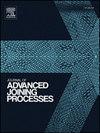Study on diffusion bonding of composite metal foams
IF 4
Q2 MATERIALS SCIENCE, MULTIDISCIPLINARY
引用次数: 0
Abstract
Metal foams are notable for their impressive impact and thermal energy absorption capabilities primarily when compared to bulk metals. Composite metal foams (CMF) exemplify these properties through unchallenged structural uniformity, enhanced by an arrangement of similar prefabricated hollow metal spheres suspended within a metallic matrix. CMF's extraordinary physical, thermal, and mechanical properties make it a prime candidate for replacing bulk materials in various structural applications. However, the use of CMF in larger structures requires the implementation of joining methods. Solid-state joining processes are particularly well-suited for metal foams as they can form solid bonds between porous workpieces without distorting their cellular structures. Previous success was achieved in joining CMF panels up to 2.5 cm thick through induction welding, though localized heating through induced Eddy currents could not fully permeate thicker samples. This limitation has caused a shift in focus to diffusion bonding of CMF panels thicker than 2.5 cm. This process utilizes a vacuum furnace, combining heat with intense pressure to facilitate atomic diffusion between workpieces. This study evaluates the suitability of diffusion bonding in joining CMF panels through a combination of uniaxial tensile tests and scanning electron microscopy (SEM) observations. Tensile testing indicated bond strength to be largely affected by sample density, and in turn, consistency of the steel powder used in CMF production. Overall, diffusion bonding of CMF was successful from thicknesses below 2.5 cm up to 5 cm, with material density and surface preparation being the apparent driving factors to successful bonding.
复合金属泡沫材料的扩散连接研究
与大块金属相比,金属泡沫主要以其令人印象深刻的冲击和热能吸收能力而闻名。复合金属泡沫(CMF)通过无可争议的结构均匀性体现了这些特性,并通过悬浮在金属基体中的类似预制空心金属球体的排列增强了这些特性。CMF非凡的物理、热学和机械性能使其成为各种结构应用中替代大块材料的首选材料。然而,在大型结构中使用CMF需要实现连接方法。固态连接工艺特别适合于金属泡沫,因为它们可以在多孔工件之间形成固体键,而不会扭曲其细胞结构。之前通过感应焊成功地连接了厚达2.5 cm的CMF板,尽管通过感应涡流局部加热不能完全渗透到较厚的样品中。这一限制导致焦点转移到厚度大于2.5 cm的CMF板的扩散键合。该工艺利用真空炉,将热量与高压相结合,以促进工件之间的原子扩散。本研究通过单轴拉伸试验和扫描电子显微镜(SEM)观察相结合,评估了扩散键连接CMF面板的适用性。拉伸测试表明,粘结强度在很大程度上受样品密度的影响,进而影响到CMF生产中使用的钢粉的稠度。总体而言,CMF的扩散键合在厚度小于2.5 cm到5 cm的范围内是成功的,材料密度和表面制备是成功键合的明显驱动因素。
本文章由计算机程序翻译,如有差异,请以英文原文为准。
求助全文
约1分钟内获得全文
求助全文

 求助内容:
求助内容: 应助结果提醒方式:
应助结果提醒方式:


